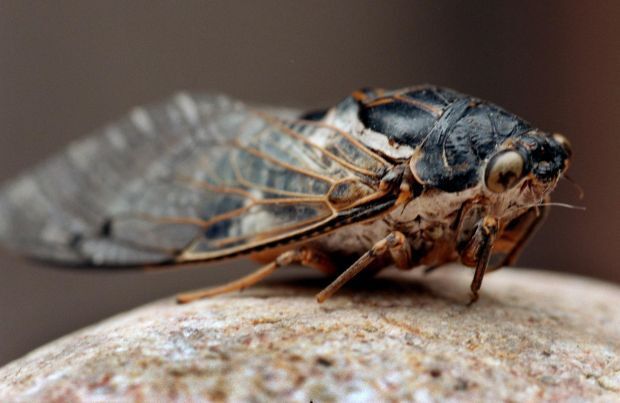Cicadas, those large and loud-buzzing harbingers of summer, are piercing the silence in parks and back yards across the УлшжжБВЅ area this month.
The big bugs, which are typically out and buzzing from June into July, are described by a University of УлшжжБВЅ insect expert as тanother one of the beautiful beasts of the Sonoran Desert.т
Entomologist Gene Hall shared a swarm of fascinating facts about cicadas т such as the observation that they are тessentially tiny violins with wings.т
The body of a cicada is similar to that of a violin in that much of it consists of empty, air-filled spaces that serve as a sort of resonating chamber, said Hall, who manages the universityтs insect collection in addition to other duties with the College of Agriculture and Life Sciences.
тThat helps with amplifying the sound they generate,т he said. тThe sound is the maleтs mating call. Females are silent.т
People are also reading…
Hall said cicadas are the loudest insects in the Southwest, and he described how they produce the sound that resonates in their violin-like bodies.
тOn the underside of their bodies, the males have a structure called a tymbal,т he said. тItтs unique to cicadas and consists of a pair of thin, hardened membranes that they flex with specialized muscles т and that creates a clicking sound. That, along with hollow cavities, is how they achieve the volume.т
CICADA DIVERSITY
About four dozen species of cicadas flutter and buzz around УлшжжБВЅ, Hall said.
They range in size from the large Southwestern giant floodplain cicada, only slightly shorter than the smallest North American hummingbird, to the continentтs smallest cicada, which can sit on a quarter coin with room to spare, he said.
тIn our (UA) insect collection, we have 36 species of cicadas from the state,т Hall said.
LOUD BUT HARMLESS
For all their noise, which might sound threatening to some people, cicadas are тcompletely harmlessт to humans, Hall said. тThey are plant feeders. They have no stinger or biting mouth parts.т
FLYING SWAMP COOLERS
Cicadas remain active during the hottest part of blistering summer days because they can effectively тturn themselves into an evaporative cooler,т Hall said.
тCicadas have figured out a way of sweating, if you will,т he said. тThey feed on plant sap, so they are constantly sucking in liquids. As the temperature gets hotter and hotter and they start to overheat, they remove the water from their blood and pass it through ducts in their body. As it exits their body through pores on their thorax, they get that continuous evaporative cooling.т
That cooling mechanism allows cicadas to be active when the weather is too hot for the predators that feed on them.
тMany reptiles and birds and mammals that would normally go after them seek shelter from the heat when it gets to be 110 degrees or more, but cicadas can still be active and feeding and sending out mating calls,т according to Hall.
SHORT NOISY LIVES
тAdults live only for two to three weeks,т Hall said. тTheir job as adults is to mate and lay eggs т and then they die off.т
That short adult life is preceded by a longer тnymphal stageт underground.
тAs with a lot of other insects, the adult lifespan is shorter than the immature lifespan,т Hall said. тAfter being in the nymphal stage underground for two to five years, they climb up through the soil.т
Then, after a hectic two or three weeks of belting out mating calls and completing the vital business of mating, their brief lives are over.



















